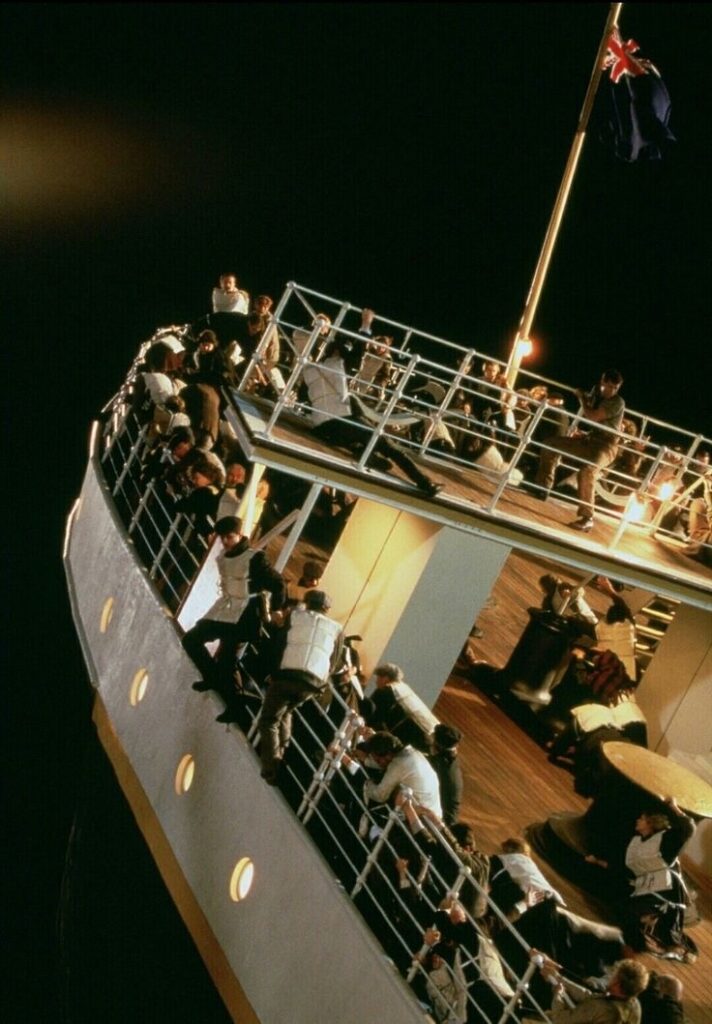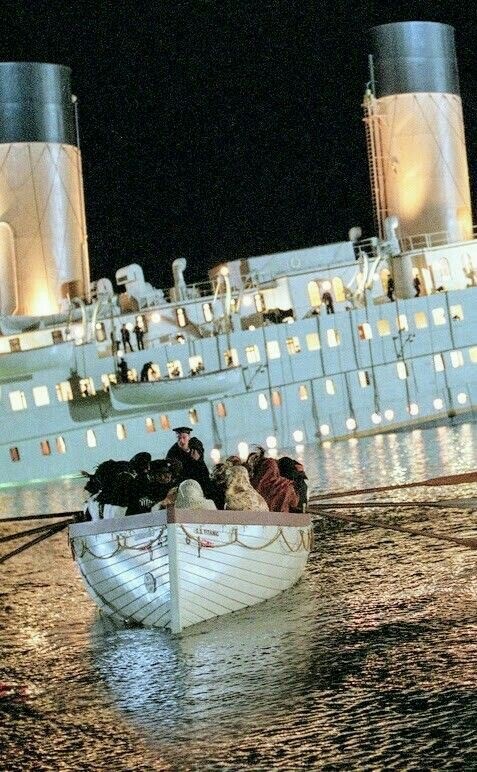The Titanic, a passenger steamer, collided with an iceberg and sank in the North Atlantic on the night of April 14-15, 1912. Out of about 2,200 people on board, over 1,500 perished. The disaster sparked interest in studying the iceberg to understand the circumstances and the damage caused to the supposedly unsinkable ship.
The Titanic was constructed during intense competition among shipping lines in the early 20th century, notably between White Star Line and the British firm Cunard, which boasted two of the era’s most advanced and luxurious ships.
Some theories suggest that despite being lauded for its state-of-the-art design, the Titanic was flawed from the outset. The Olympic-class ships, including the Titanic, featured a double bottom and 15 watertight compartments with electric doors operable from the bridge.
Shipbuilder magazine once hailed the Olympic liners as “practically unsinkable” due to their watertight bulkheads. However, these bulkheads had a critical flaw: the walls separating them extended only a few feet above the waterline, enabling water to flow between compartments if the ship listed or pitched forward.
Another significant safety issue was the insufficient number of lifeboats on the Titanic. The ship carried only 16 lifeboats and four Engelhardt “collapsibles,” which could accommodate just 1,178 people. With a capacity for over 3,300 passengers and crew, this was woefully inadequate and contributed to the high loss of life.

The Titanic caused a sensation when it embarked on its maiden voyage from Southampton, England, on April 10, 1912. Among the passengers were numerous high-ranking officials, wealthy industrialists, dignitaries, and celebrities, including J. Bruce Ismay, the managing director of White Star Line, and Thomas Andrews, the ship’s builder.
The wealthiest passenger was John Jacob Astor IV, heir to the Astor fortune, who had recently made headlines by marrying 18-year-old Madeleine Talmadge Force, 29 years his junior, following his divorce from his first wife.
Titanic’s departure was marked by some unusual events, including the discovery of a small coal fire in one of its bunkers. While alarming, such fires were not uncommon on steamships. Stokers managed the situation by hosing down the smoldering coal and shoveling it aside to reach the base of the fire.
After assessing the situation, the captain and chief engineer determined that the coal fire had likely not damaged the hull structure. The stokers were instructed to continue controlling the fire while at sea.
A theory proposed by some Titanic experts suggests that the fire became uncontrollable after departing from Southampton, leading the crew to attempt a full-speed crossing. This increased speed made it impossible to avoid the fatal collision with the iceberg.
Another unsettling incident occurred as Titanic departed from Southampton dock. The ship narrowly avoided a collision with the America Line’s S.S. New York. Some superstitious Titanic enthusiasts consider this a bad omen for the maiden voyage.
On April 14, after four days of uneventful sailing, Titanic received occasional ice warnings from other ships but continued on calm seas under a clear, moonless sky. Around 11:30 p.m., a lookout spotted an iceberg emerging from a slight haze directly ahead. He rang the warning bell and called the bridge. The engines were quickly reversed, and the ship turned sharply. Instead of a direct hit, Titanic grazed the side of the iceberg, scattering ice fragments on the forward deck.
Believing there was no collision, the lookouts felt relieved, unaware that an underwater spur of the iceberg had slashed a 300-foot gash in the hull below the waterline. By the time the captain and Thomas Andrews from Harland and Wolff inspected the damage, five compartments were already filling with seawater. The bow was sinking, causing seawater to overflow from one bulkhead into the next compartment.

Thomas Andrews quickly estimated that Titanic might stay afloat for about an hour and a half, perhaps a bit longer. The captain, who had already instructed his wireless operator to call for help, then ordered the lifeboats to be loaded.
Just over an hour after hitting the iceberg, the first lifeboat was lowered in a disorganized and chaotic evacuation. Although designed to hold 65 people, it left with only 28 on board. This under-filling became common; almost every lifeboat launched with far fewer passengers than its capacity during the confusion before Titanic sank.
Following maritime law, women and children boarded the lifeboats first. Men were allowed to board only if there were no women or children nearby. Despite this rule, many women and children perished due to the disorganized evacuation, preventing them from reaching the lifeboats.
Contrary to Andrews’ estimate, the Titanic stayed afloat for nearly three hours, revealing both cowardly acts and remarkable bravery.
During this time, countless personal dramas unfolded: men bid farewell to their wives and children, families were torn apart in the chaos, and selfless individuals gave up their spots to stay with loved ones or to let more vulnerable passengers escape. In the end, 706 people survived.
While some parts of the ship have been salvaged, most of the Titanic remains at its final resting place, 12,000 feet underwater and over 350 nautical miles from the coast of Newfoundland, Canada. Its tragic story of disaster and heroism continues to be recounted in numerous books, articles, and movies.
The Titanic’s sinking was one of the deadliest maritime disasters during peacetime and quickly spurred significant changes. The United States Congress conducted hearings on the tragedy, resulting in a report and new measures to enhance navigation safety.
Similar inquiries took place in the United Kingdom. The international community united to establish global maritime standards and regulations to improve navigation safety, leading to the Convention for the Safety of Life at Sea (SOLAS), considered the most crucial international agreement for the safety of merchant ships.
Sources




